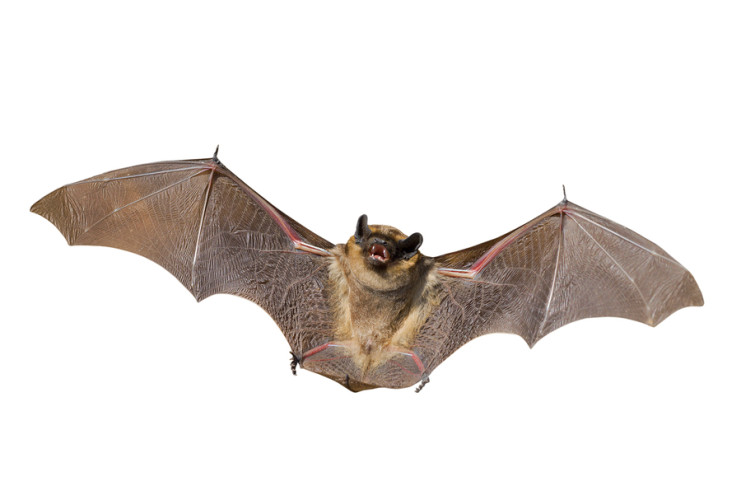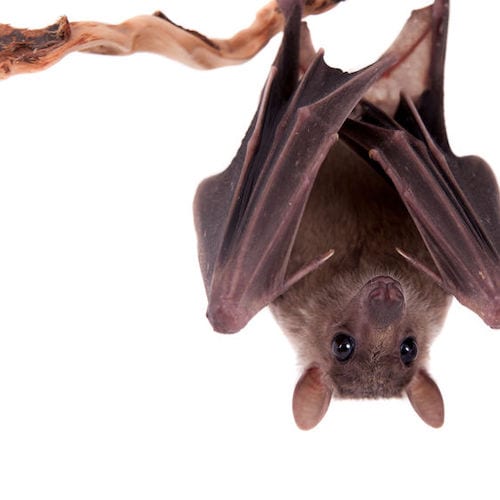A guide to dealing with bats in the attic
Dos and don’ts when it comes to bats
Bats are an endangered species and are protected by law, which means it is a criminal offence to try to kill or remove bats or to change/block their roost. If you’ve discovered bats are roosting in your dream home, you either need to forget about the property, or accept that you’ll have a brood of small and furry tenants living in the loft.
If you don’t want to give up on the property you’ve found, then you should read through the points below about why bats are less of a problem than you might think.
1. Bats are clean and sociable animals; they are not rodents and will not nibble or gnaw at wood, wires or insulation.
2. Bats don’t build nests, so they won’t bring bedding material into the roost.
3. Most bats are seasonal visitors to buildings, so are unlikely to live in the same place all year round – although they do tend to return to the same roosts year after year.
4. Female bats usually have only one baby each year, so properties don’t become ‘infested’.
5. All bats in the UK eat insects and are actually a great form of natural pest control.
On the other hand, there can be implications for any building or remedial work you may want to have completed. You will need to gain permission to undertake any timber treatment, which is normally allowed when the bats are not present.

How To Get Rid Of Bats In Various Scenarios?
What Are Bats?
Many people believe that bats are mysterious mammals. They are the only mammals that are capable enough to fly rather than to glide.
In some places, people believe in superstitions that it is a bad sign if bats enter the house.How much ever brave a person might be, if a bat enters the house, there is no surprise if the person panics.
Actually, bats are helpful to humans in the way that they eat away the insects that are harmful to man. However, their existence is still a nuisance to many people as they make scratching and squeaking sounds from various places where they roost.
It is illegal and inhumane to kill bats. Therefore, follow methods to send them out without hurting them. Many people find it very difficult to get rid of these mammals as they might become aggressive in certain scenarios when they want to secure themselves. However, there is no need to worry if you know the way to manage without endangering yourself or bats,while getting them out.
How To Free Your Home From Bats?
A bat unintentionally enters a house, generally after the dark. It generally happens when a window or door is open or they may fall through an opening of a chimney or any outlet on the exterior of the house. They appear big while flying, but even an opening of ½ cm diameter is enough for them to enter.

How to get rid of bats in your house
Whether it’s a single confused bat or a whole flappy family living in the attic, or a maternity roost in your roof space, knowing how to get remove bats in the house may be something you’re unfamiliar with. Here we’ll provide an easy guide for bat removal and ensuring you don’t break the law.
Dos and don’ts when dealing with bats:
Before we show you how to get rid of bats, there are a few important things you should be aware of.
DO contact a professional. Whilst it is unlikely you will ever face an ‘infestation’ of bats, always contact a professional to ensure that you remove bats in the roof safely and appropriately.
DO aim to remove them before the mating season. Bats breeding places are protected, so sorting out the removal of bats before the mating season will prevent one or two resident bats from turning into a whole family, as well as following regulations.
DO make sure you are well-informed about bats. Bats are misunderstood creatures to the general public. Whilst some species of bats can produce harmful excrement, UK bats have no known health risks associated with them.
DON’T break the law! Bats are a legally protected species. If you need help or advice in your home contact the National Bat Helpline. You will get free advice, information, and help.
DON’T capture a bat in your house.
DON’T use pesticides or poison. Bats are not pests. In the UK they are a form of pest control themselves as they love to feast on bugs! Other creatures like rats are pests and do need to be dealt with more urgently
How to get a bat out of the house: Easy steps to remove bats in the roof and keep them out
If you find bats living in your house, it is best to call the National Bat Helpline for advice. With bats being a protected species, taking to right steps in removing them safely is very important.
Bats
Several of these species—pallid bat (Antrozous pallidus), big brown bat (Eptesicus fuscus), Yuma myotis bat (Myotis yumanensis) and other Myotis species, and Mexican free-tailed bat (Tadarida brasiliensis)—frequently use man-made structures such as attics, barns, or bat boxes for roosting sites and are the species you most likely will find in urban areas
Bats have relatively long lives—5 to 30 years depending on the species—and are among the slowest reproducers for their size of any mammal. For example, the little brown bat, the most frequent user of artificial bat habitats in the United States, can live for 3 decades with the female giving birth to 1 pup per year.
In most cases, bats don’t cause problems for homeowners or gardeners, and because of their nocturnal habits, you rarely will see them. Because they eat insects, bats also might provide some control of insect pests in the landscape.
Problems that do occur often happen when migrating bats roost in buildings, usually during warmer months. Their droppings can accumulate, they can make noise, and some people are uncomfortable with close proximity. Bats also can transmit diseases, with rabies being a special concern.
BIOLOGY AND LIFE CYCLE
As mammals, bats have fur, give birth to living young, and provide their young with milk. In spring, female bats form colonies to give birth and rear young. Roosting sites include buildings, bridges, or other structures as well as caves or tree cavities. Adults leave roosts at night to forage for insects. Young bats develop rapidly, and most are able to fly within a month or two after birth. Generally males and females with young will roost separately, but in late summer or fall, males might join the colony, and bats might migrate to warmer areas or hibernation roosts in the winter when insects are scarce.
Managing Bats in Buildings
Bats help the ecosystem by eating insects, including crop, forest and human health pests. Bats can eat up to half their weight every night. All 15 species of bats in B.C. are protected from being killed or harassed under the Wildlife Act, and many are listed species-at-risk or endangered. Bats need our protection, including conservation of colonies that live near humans.
Bats may cause some concerns, but many people live safely with bat colonies that are separate from their living space. Bats can carry fleas, mites, ticks and bat bugs (which are similar in behaviour and appearance to bed bugs). These pests are specific to bats and don’t usually affect humans
Bats may also carry rabies, but this is rare. Less than 1% of wild bats have the rabies virus. However, because rabies is fatal if not treated, you must never touch a bat with bare hands. Contact public health or a physician if you have been bitten or scratched by a bat. If a pet has been in contact with a bat, contact a veterinarian for an assessment.
Removing Bats from Buildings
If bats are roosting in an area that isn’t interfering with human activity, consider leaving them undisturbed. They won’t destroy wood, wires or insulation.
If a bat has entered the living area of your building, try getting them to leave on their own by:
Closing interior doors
Opening outside doors and windows
Turning off the lights
A sleeping bat inside a house can be safely picked up:
Always wear thick gloves if handling a bat
Use a pillowcase or a box to gently trap the bat
Place the bat outside in a safe spot, out of reach of cats or other predators. Select a place where the bat can swoop down to take flight (for example, high on a porch, the top of a vehicle, or a tree branch)
Bats are protected under the Wildlife Act. Certain actions are illegal and ineffective for bat removal.
Do not use pesticides
Do not play loud music
Do not use ultrasonic devices
Do not scatter mothballs
Do not set up bright lights